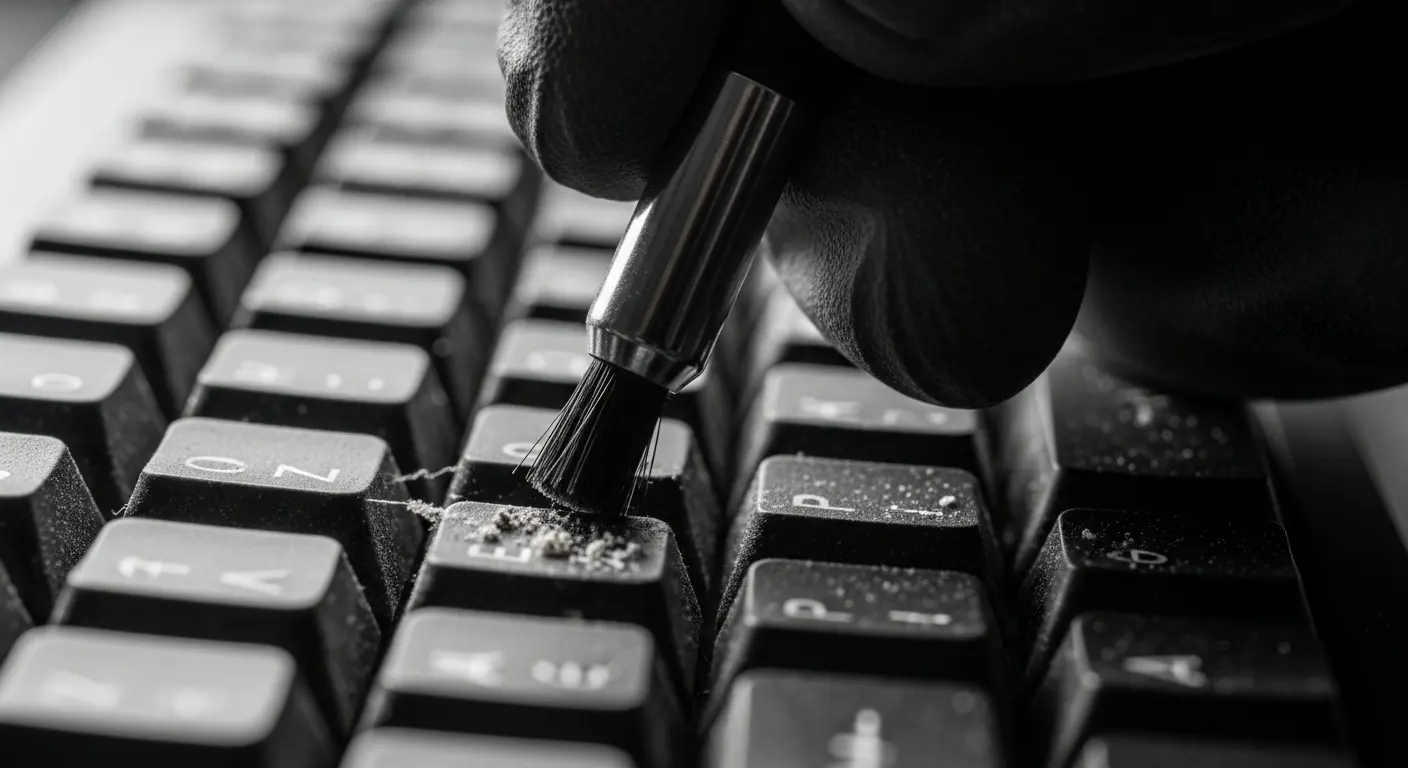Phase 1: Crime Scene Assessment
Before any intervention, a thorough analysis of the contamination site is necessary. Your keyboard is not merely dirty; it is a rich, layered archaeological record of your recent dietary and biological history. I see the ghosts of lunches past, the shed keratinocytes of deep thought, and the pervasive, silent blanket of household dust. This is not a task for the faint of heart. It is a forensic cleanup.
Your first step is to sever the connection. Disconnect the USB cable or turn off the Bluetooth pairing. For laptop operatives, a full system shutdown is non-negotiable. We are not interested in accidentally composing an email to your superior that consists solely of “asdfghjkl;”. Photographic evidence is also recommended. Document the ‘before’ state. This serves as a grim reminder and a baseline for measuring operational success.
Phase 2: Initial Particulate Extraction
With the subject neutralized, we proceed to the initial evidence removal. Invert the keyboard over a waste receptacle. Administer a series of firm, percussive taps to the chassis. This is a gravity-assisted extraction. Observe the fallout. Is that a remnant of a croissant from Tuesday? A piece of potato chip from last night’s existential spiral? Each crumb tells a story. The larger debris must be cleared before we can proceed to more granular analysis.

Phase 3: Decontamination Protocols by Subject Type
Not all keyboards are created equal. Their internal architecture dictates the appropriate decontamination protocol. Choose your path carefully; the operational integrity of your input device hangs in the balance.
Protocol A: Mechanical & External Desktop Keyboards (Deep Excavation)
These subjects are robust, allowing for more invasive procedures. The primary tool for this phase is a keycap puller, an instrument of precise extraction. Before you begin, I strongly advise documenting the current key layout unless you enjoy solving a QWERTY-based puzzle under duress. Once removed, the keycaps can be submerged in a solution of warm water and mild soap for sterilization. Note: keys with stabilizer bars (Spacebar, Enter, Shift) require careful handling, as their metal components are susceptible to corrosion.
With the underlying switch matrix exposed, you can now address the deeply embedded bio-contaminants. Deploy compressed air in short, controlled bursts to dislodge particulates. A soft-bristled brush can be used for manual agitation of stubborn debris. For a final sweep, a low-suction vacuum with a brush attachment is effective.
Protocol B: Laptop & Membrane Keyboards (Surface Sterilization)
These units are integrated systems with delicate sensibilities. Deep excavation is impossible and ill-advised. Our approach must be one of careful surface-level sterilization. The risk of liquid ingress is high, and moisture is the mortal enemy of integrated circuits.
- Compressed Air: Direct short blasts of air at an angle across the keys. This encourages debris to exit the chassis rather than being forced deeper into the mechanism.
- Isopropyl Alcohol Solution: A solution of 70% isopropyl alcohol is the industry standard. Do not apply it directly to the keyboard. Lightly dampen a microfiber cloth or cotton swab—damp, not wet—and gently wipe the key surfaces and surrounding areas. The alcohol evaporates quickly, minimizing the risk of liquid damage.
- Cleaning Slime/Gel: These amorphous, gelatinous compounds can be pressed into the crevices to collect dust and debris through adhesion. It is a surprisingly effective, if unsettling, method of non-destructive sample collection.
Phase 4: Reassembly and Final Analysis
Once all components are thoroughly dry, you may begin reassembly. The satisfying click of a keycap snapping back into place is the sound of order being restored to the universe. Power up the device and test all functions. Your keyboard is now a clean slate, a sterile environment ready to chronicle your next set of brilliant ideas, questionable web searches, and, inevitably, the crumbs of your next meal. The cycle is, after all, inescapable.
